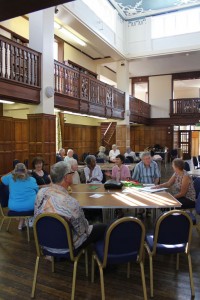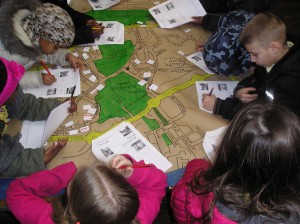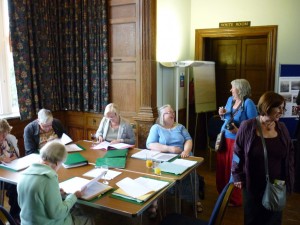
Maryon Park in the early 1900’s.
Area of Interest
About the project CPRP
The Charlton Parks Reminiscence Project has focused on local people’s history related to the six open spaces in Charlton that were once enclosed within the Maryon-Wilson Family Estate. The Project has been collecting stories and reminiscences related to Hornfair, Charlton, Maryon Wilson, and Maryon Parks, Gilberts Pit and Barrier Park.
This necklace of beautiful open spaces that once comprised Charlton Estate, encompassing Charlton House, a beautiful Jacobean manor house, lie along the Green Chain Walk as it runs from Shooters Hill through Charlton to the River Thames in south-east London.
We have been exploring local histories by talking to local people about their memories of a variety of things they have done in the parks, or historical events and entertainments. Going further back we have looked at changes to the estate through maps, books and newspapers, photographs and drawings to bring the past to life. We have brought the two together by looking at how and when the parks were constructed on land that was once within the family estate and how this history has shaped the layout of the parks.
During the project we have been working with local schools including The John Roan School, local primary schools, Greenwich Council Parks department, Greenwich Heritage Centre, The Royal Artillery at Firepower and Charlton Athletic Football Club.
Over 15 months the project will have organised three public events presenting the story of the parks, as it collects, develops and arranges stories and personal interviews. 20 volunteers including secondary school pupils have been trained in the skills of interviewing and digital recording.
Stuart Evans of Creative Process, the not-for-profit regeneration agency working with the creative sector in London, has devised an interactive website to publish the stories and provide a resource for local school and researchers. He has also trained Rib Davis and Carol Kenna, project co-ordinator, to edit and maintain the website over an initial five years.
Rib Davis, a British Library oral history trainer, trained the volunteers and is editing the interviews for inclusion on the CPRP web site.
Carol Kenna, artist, has organised the interview and research programme and has edited the collected materials to be displayed on the web site.
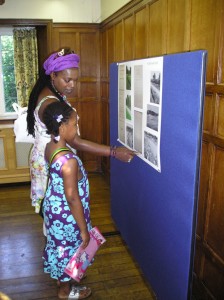 A programme of three public events began in October 2011 with a display of research material in the Old Library, Charlton House. Local people came together on October 1st to view and discuss the displays, share their recollections and arrange further interviews.
A programme of three public events began in October 2011 with a display of research material in the Old Library, Charlton House. Local people came together on October 1st to view and discuss the displays, share their recollections and arrange further interviews.
The second event was spread over two days in February 2012, although also open to the general public, priority was given to local primary schools inviting them to bring their pupils to see materials collected so far. Classes from Thorntree, Woodhill, Cherry Orchard and Sheridan primary schools attended. The children were presented to a short talk about the history of the parks and undertook a mapping exercise to explore where they lived and went to school in relation to the Charlton parks. They also explored Charlton House and Park using a purpose designed I-spy and took away a questionnaire to fill out with their parents and siblings.
The third event took the form of a two week exhibition displayed in the Grand Salon, Charlton House between June 25th and July 6th 2012 in the lead up to the Olympic games. The exhibition was open to the general public and schools were once again invited to participate. This time Thorntree and Charlton Manor primary schools took part. The exhibition launched the Charlton Parks Reminiscence project web site which will be hosted initially for five years. All materials collected over the course of the project have been archived on the web site and we hope that people will continue to add stories over the coming years.
On full completion of the project all materials collected in the course of our research and interview programme will be archived with the Greenwich Heritage Centre. We also aim to link the website to the British Library oral history collection.
Greenwich Mural Workshop and partners were awarded a grant of £39,000 by the Heritage Lottery Fund ‘Your Heritage’ programme. The partners include Friends of Charlton House, Friends of Charlton Park, Friends of Maryon and Maryon Wilson Parks, and the Charlton Society. The project is also supported by Lord Gough, 5th Viscount Gough, direct descendent of the Maryon-Wilson family, custodians of Charlton House and Estate from the early 1700’s until 1923, when part of the estate was sold to London County Council.
“This is an imaginative project to capitalise on the local community’s support for their neighbourhood parks to get them involved in unlocking the hidden history of their area that these green spaces represent.”- Sue Bowers, Head of Heritage Lottery Fund London
“ The partnership is thrilled to receive the endorsement of the Heritage Lottery grant. By recognising the worth of this project it has been made possible for local people to place their own histories into the wider history of Greenwich and the country.”- Carol Kenna, artistic director of Greenwich Mural Workshop
Greenwich Mural Workshop
(www.greenwichmuralworkshop.com)
Greenwich Mural Workshop (GMW) is an artists’ lead co-operative, a limited company and not-for-profit organisation, with a core membership of 10 self-employed artists and administrative staff.
The Workshop regularly works in partnership with other professional organisations. All artist’s fees and operational funds are raised through grants, third sector & private commissions.
GMW was established in 1975 to develop the practice and philosophy of community and public arts, which seek to empower local people, develop a sense of place, cultural value and integrity and create environmental change within local neighbourhoods. GMW has a strong belief in the importance of local history in collaboration with the arts in the furtherance of these aims. We also have a long term interest in the design and development of towns and city, how historic buildings and spaces marry with contemporary architecture and urban design and how local people can collaborate with the state and private sectors to develop excellent environments.
In pursuit of these beliefs GMW has worked with schools, community organisations, local councils and private sector clients including trade unions.
Our activities include mosaic and painted murals, training, refurbishment of local open spaces and school playgrounds, celebratory events, consultancy and advice.
GMW has also represented the Greenwich community sector in tripartite partnerships of local authority, business and community to deliver SRB programmes.
Charlton Parks Reminiscence Project grew out of GMW working with a number of Friends of Greenwich Parks groups to find funds for the groups to undertake various projects to enhance their local parks. On completion of this project the groups based in Charlton asked GMW to help develop a project that would combine their interest in their parks under the banner of Charlton Parks Reminiscence Project, and enable them to apply to the Heritage Lottery Fund’s ‘Your Heritage’ project for funds to undertake it. The project was successful in gaining funds from HLF and Viscount Gough.
A partnership was established to take the project forward, including Greenwich Mural Workshop, the Charlton Society, the Friends of Charlton House, the Friends of Charlton Park, and the Friends of Maryon Wilson and Maryon Parks. Other partners include Firepower, Greenwich Heritage Centre and Greenwich Council Parks department.
GMW is undertaking project management for the project.
Rib Davis
I’ve been working in oral history since the late 70s, on books, exhibitions, websites and particularly oral history-based theatre.
For some years now I have also been a trainer in oral history on behalf of the British Library and the Oral History Society, which has given me the opportunity to learn about all sorts of oral history projects, from museum work in Newcastle to youth work in Tottenham, from a prestigious exhibition in the Science Museum to a local radio project in Evesham.
I am fascinated by the day-to-day fabric of so-called ordinary people’s lives (we are never ordinary!); I love listening to people’s stories, and helping to put them together in various ways to produce a bigger picture of a community.
The Charlton Parks Reminiscence Project – the first parks project I have worked on – seems to me a particularly unusual and imaginative venture, and I’m hugely enjoying contributing to it.
CPRP Steering Group
The Steering Group is made up of representatives from each of the partner organisations.
- Gill Cooper and Felicity Young: Friends of Charlton House.
- Tim Anderson, Paul Breen and Gulle Stubbs: Friends of Maryon and Maryon Wilson Parks
- Hazel Greig-Midlane: Friends of Charlton Park
- Roden Richards: Charlton Society.
- Stephen Lobb: Greenwich Mural Workshop.
- Carol Kenna: project Co-ordinator, Greenwich Mural Workshop
- Rib Davis, Oral History trainer and web site editor: Independent Consultant.
It is the responsibility of the Steering Group to ensure that the project progresses according to the agreements reached with the Heritage Lottery fund, to achieve its objectives and within its stated timescale and to ensure good financial management.
Firepower
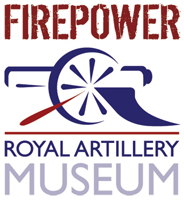 Firepower is one of the partners supporting the Charlton Parks Reminiscence Project, providing the project with access to their archives and advice.
Firepower is one of the partners supporting the Charlton Parks Reminiscence Project, providing the project with access to their archives and advice.
The Royal Artillery Museum has been open to the public in Woolwich since 4 May 1820, a record believed to be unrivalled by any other military museum.
In May 2001 the collection of artillery was moved to new premises within the gates of the Royal Arsenal and opened under the new name of Firepower, The Royal Artillery Museum. The Museum had returned to the original home of the Regiment and indeed of the collection. The collection was founded in 1778 at the Royal Arsenal by Captain (later Lieutenant General Sir) William Congreve.
Firepower, the Royal Artillery Museum in Woolwich tells the powerful and dramatic story of artillery, scientific discoveries made through warfare and human stories of courage and endeavour.
The Royal Arsenal was one of the most important centres in the world for munitions manufacture and until recently was a well kept secret from the public. Many of the guns and carriages on display were made in the Arsenal, making it a significant part of the local heritage. Together with a world class collection of artillery and associated weapons, uniforms, drawings, displays of diaries and medals bring together some 700 years of world artillery history.
Firepower houses the Royal Artillery Museum and research archives.
We museum aims to give an insight into artillery and enable an understanding of the role that Gunners and their equipment have played in the Nation’s history.
Details of Opening Times and charges can be found on the Firepower web site, via the link on the CPRP Home page.
Greenwich Heritage Centre
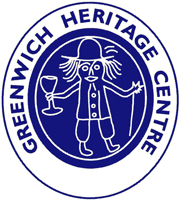 Greenwich Heritage Centre is one of the partners delivering the Charlton Parks Reminiscence Project, providing the project with access to their archives and advice.
Greenwich Heritage Centre is one of the partners delivering the Charlton Parks Reminiscence Project, providing the project with access to their archives and advice.
The Centre is based in the Royal Arsenal, Woolwich and houses all the collections of the former Greenwich Borough Museum in Plumstead and the Local Studies Library at Woodlands. This includes maps, photographs, paintings, archaeological material, natural history specimens, social history objects and the records for the London Borough of Greenwich and its predecessors.
The permanent exhibition includes many objects relating to the Woolwich Arsenal. Other objects from the collection may be viewed by appointment with the Collections Manager or through Search Room staff.
A full description of the Centre’s services can be found on the GHC web site via the links on the CPRP Home page.
The Bellarmine pot: Excavations in 1973 and 1974 at the Woolwich Ferry site unearthed two pottery kilns. One was an earthenware kiln and the other a stoneware kiln.
The stoneware kiln, dating from 1620-1650, is the earliest stoneware kiln in Britain. It produced Bellarmine jugs, originally made in Germany, which were popular in the 17th century. The Woolwich Bellarmines had a distinctive sportsman medallion depicting a man holding a goblet in one hand and a shooting stick in the other. This medallion has been adopted as the Greenwich Heritage Centre’s logo.
Local clays would have been used to produce the earthenware pots but the clay for Bellarmines fired in the stoneware kiln probably came from Devon and would have been transported to Woolwich using the River Thames.
Volunteers
This project has only been possible through the enthusiastic contributions made by local people who have volunteered their time to undertake research, conduct interviews, sort through their home photographs to add to the web site or act as stewards for the three events and exhibition. So thank you to Edna Anderson, Timothy Anderson, Jill Austen, Paul Breen, Sheila Dobner, Iris Dove, Patricia Field, Jim Free, Liz Green, Hazel Greig-Midlane, John Greig-Midlane, Nathan Lobb, Stephen Lobb, Liz Logan, Mandy and Peter, Derek Penfold, Andy Potts, Barbara Pryn, Diana Rimel, Rosemary Savinson, Liz Somerville, Peter Somerville, Gulle Stubbs, Lauraine Wilson, The John Roan School staff and pupils – Mr. Roddy Wilson, Charlotte, Edward, Haydn, Jamie, Jenny, Katy, Kelsey, Leighvi, Mia, Robbie, Susie, Tilly. Also John Roan year 8 pupils – Anh, Bethan, Bethan 2, Charlotte, Demelza, Edith, Elizabeth, Favour, Greta, Isabelle, Kelly and Tom.
Interviews
The following people who live or work in Charlton have contributed written stories, articles and interviews, and by giving their permission to publish the interviews have helped make this project possible. Our thanks go to Douglas Adams, Ron Allison, Edna Anderson, Bernard Ashley, Jill Austen, Wendy Barrington, Lee Beasley, John Beckham, Ann Bedwell, Fabian Best, Mavis Best, Suzi Burridge, George Burton, Anthony Dyson, Ted Ellis, Phyllis Flynn, Ann Foster, Jim Free, Malachy Galloguly, Betty Green, Doreen Gunning, Trevor Gunning, Toni Hale, Bob Harris, Peter Haswell, Joan Healy, Chris Henning, Grace Hills, Jean Humphries, Carol Kenadal, Tony Lord, Paul Martin, Paul Mepham, Bob Mitchell, Claire Mullord, Elsie Murphy, Liz McDermott, Alan Pett, Constance Raper, Ron Roffey, Rosemary Savinson, Baljinder Singh Sidhu, Beryl Smith, Steve Smythe, David Sneath, Ian Snipp, Joyce Snipp, Paul Tiffen, Ken Timbers, Margaret Torrison, Mrs. Trenchard, Linda Walker, Frances Ward, May Wellard, Mr. Wellbelove, Barbara Whitaker, Joseph Woodcock, Rita Yardley. In addition pupils from Thorntree primary School with the help of their teacher Ann Marie Walker completed questionnaires with their families in connection to their favourite parks and how they use the parks.
Extract from Interview transcript: Rose Savinson talks about what the parks mean to her
How important have the various parks in Charlton been to you?
Rose: I’d say very, very important in all sorts of ways. Firstly, just in general, having lived for many, many years over in north-west London – Wembley and Harrow and round there – it’s dire round there. And coming over here and seeing all that green space, I think was the first thing. I thought, ‘This is wonderful!’ You know, there’s a combination of green space and the river so walking down through the parks and then ending up down by the Barrier was just really, quite phenomenally exciting and just… to me… the fact that London could actually be a bit green and not just grim rows and rows and rows of houses with the odd, tiny little public space if you were lucky. That you could actually live in London but be surrounded by greenery and animals and birds and trees and flowers and all the rest… it was just quite wonderful and that’s why I never ever wanted to move out of this area because I just think it’s really great.
Extract from Interview transcript: George Burton talks about the parks in his life
As an adult, I used the park quite a lot for a kind of respite because I had problems, like my mother was very, very ill and then we had to bring Barbara’s mother in to live with us who, eventually died in our house. I had problems with dry rot, which I didn’t know how I could pay for it and also I was going through periods of… well, I was made redundant, all over a period of time. But my only respite really was to sort of, … rather than go mad worrying about all these things I used to just go into the park, either of the parks, and I could just sit in the park for – it only needed what? Ten minutes, quarter of an hour, half an hour, just to get away and be able to sit there and, you know, sort of get my frame of mind back together again so I could then go back and face the problems I had. So the parks was – as an adult also – was very, very important to me.
I’ve always liked the parks and always used them as a kid and, as I’ve grown up in them, so they’ve become part of my life anyway. So, I think for me, as an adult as well as a child, it has played quite a big part in my life really.

